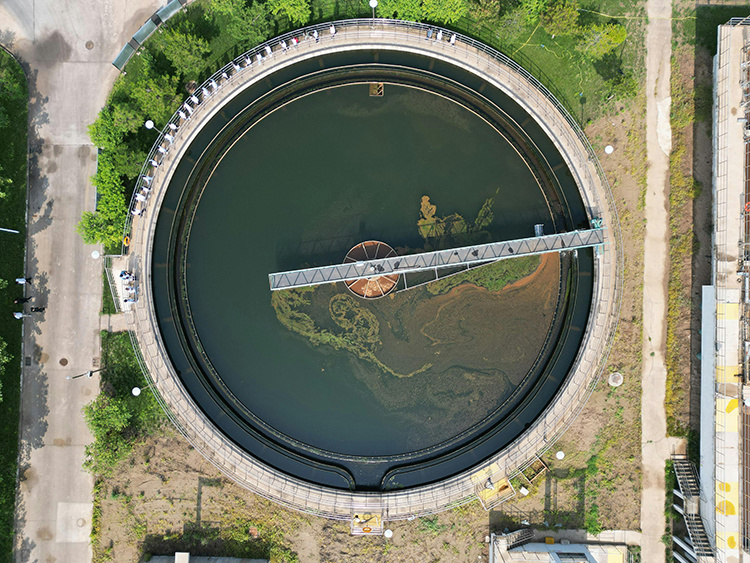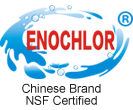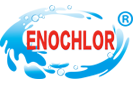21
2025
-
03
The "Invisible Revolution" of TCCA disinfectants: From pool cleaning to carbon neutrality, three facts You didn't know
In 2025, the global disinfectant market is undergoing a quiet transformation: while consumers are swimming in the pool, using household bleach, or even drinking tap water, few are aware that a compound called TCCA (trichloisocyanuric acid) is quietly underlining the hygienic safety of modern life. However, with the tightening of environmental protection policies and the upgrading of consumer safety awareness, TCCA's "efficient" label is facing a fierce collision between technology iteration and market demand.
In 2025, the global disinfectant market is undergoing a quiet transformation: while consumers are swimming in the pool, using household bleach, or even drinking tap water, few are aware that a compound called TCCA (trichloisocyanuric acid) is quietly underlining the hygienic safety of modern life. However, with the tightening of environmental protection policies and the upgrading of consumer safety awareness, TCCA's "efficient" label is facing a fierce collision between technology iteration and market demand.
Why is TCCA the "Hidden Champion" in the field of disinfection?
TCCA (chemical formula C3Cl3N3O3) is the first choice for swimming pool disinfection, drinking water treatment and industrial bleaching due to its slow release of free chlorine. Compared with traditional calcium hypochlorite, its core advantages are:
Long-term stability: 1 gram TCCA tablets can release chlorine for 8-10 hours, and the bactericidal rate is maintained above 99.9%;
Safe and convenient: pH neutral, 40% less corrosive to metal, safer for home use;
Environmental disputes: cyanuric acid byproducts may be produced in the production process, which will affect the ecology of water bodies for a long time.
Technological breakthroughs: Three major innovations from "high pollution" to "zero emission"
1. Closed-loop production process
The synthesis of traditional TCCA requires high temperature cyanuric acid chloride and produces a large amount of chlorine waste gas. New technology through:
Waste gas recovery system: convert by-product HCl into hydrochloric acid for recycling, reducing emissions by 90%;
Low temperature catalysis: Using ruthenium based catalyst, the reaction temperature is reduced from 80℃ to 45℃, and the energy consumption is reduced by 35%.
2. Nano slow release technology
The chlorine release rate is intelligently controlled by loading TCCA into the silica nanopores. Experiments have shown that the technology has reduced the frequency of pool disinfection from once a day to twice a week, saving 28 percent in operating costs.
3. Biodegradable formula
The "TCCA+ peracetic acid" composite preparation developed by Delft University in the Netherlands can be degraded into CO2 and water within 72 hours to solve the problem of cyanuric acid accumulation.
4 questions consumers are most concerned about and their answers
1. Does household TCCA corrode sewers?
Truth: Solutions with concentrations below 0.5% are safe for PVC pipes, but they should be avoided when mixed with acidic cleaners (such as toilet cleaners).
2. What should I do if my skin is dry after swimming pool disinfection?
Solution: Choose a "low residue" TCCA (cyanuric acid content < 20ppm) with vitamin C neutralizer.
3. How to identify quality TCCA products?
Three-step identification method:
Dissolution rate: it takes 30 minutes for qualified products to completely dissolve (too fast may be mixed with calcium hypochlorite);
Residual chlorine value: using DPD test paper, residual chlorine should be maintained at 1-3ppm after 1 hour;
Check certification: NSF/ISO9001 certification is preferred.
4. Can TCCA be used for industrial wastewater treatment?
Case: An electroplating factory adopts TCCA+ ozone combined process, the COD removal rate is increased to 95%, the cost is reduced by 40%.

Market trend: Three directions from price war to value war
1. Customized service
Case in point: Germany's LANXess launches "Disinfection on Demand" subscription service, which automatically distributes TCCA doses based on water quality sensor data, reducing customer costs by 30%.
2. Carbon neutral certification
Technology path: The use of green electric drive production process, coupled with carbon capture technology, can achieve "zero carbon TCCA".
3. Emerging markets explode
The market for pool disinfectants in Southeast Asia is growing by 12% annually, and demand for drinking water treatment is surging in India.
The evolutionary history of TCCA is essentially a triangular game of efficiency, safety and sustainability. When consumers begin to examine the ecological cost per gram of disinfectant with a "microscope", only companies that deeply integrate technological innovation with user insight can win the future in this green race.
2023-04-14







